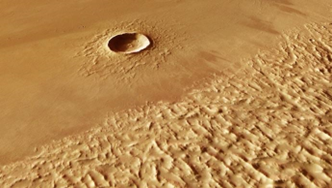Marsquake
Why in the news?
- Marsquake Reveals Molten Layer Above Martian Core.
- Seismic data reveals an unknown layer of molten rock encircling a liquid metallic core, which is smaller and denser than previously estimated.
- The data was collected by Nasa’s InSight lander.
Research
- Mars experienced seismic waves due to an impact from a meteorite.
- The ability of seismic waves to change speed and shape when travelling through various planetary materials enabled this discovery.
- The observed wave behaviour pointed to the existence of a molten silicate layer, roughly 90 miles thick, encircling the core. This molten zone resides at the base of the mantle, situated between Mars’s outer crust and its core.
- Unlike Earth, Mars possesses a molten layer encasing its iron and nickel-dominated core, incorporating lighter elements such as sulphur, oxygen, carbon, and hydrogen.
- These lighter components constitute approximately 9-15% of the core’s total composition by weight, which is lower than earlier approximations.
Marsquake
- Marsquakes, as the name suggests, are seismic events that occur on the planet Mars, similar to earthquakes on Earth, but with notable differences.
Marsquakes and Earthquakes
- Cause: Both marsquakes and earthquakes result from tectonic plate movement or in case of Mars, internal stresses. However, on Mars, cooling and contraction are the main drivers, leading to crustal stress and fractures.
- Frequency : Marsquakes are infrequent. Marsquakes are less frequent than on earthquakes due to its lack of active tectonic plate boundaries.
- Intensity: Marsquakes are typically of lower magnitude compared to earthquakes.
- Surface Impact: Earth’s thicker atmosphere dissipates seismic energy, whereas Mars has a thin atmosphere, resulting in more intense surface shaking from marsquakes.




